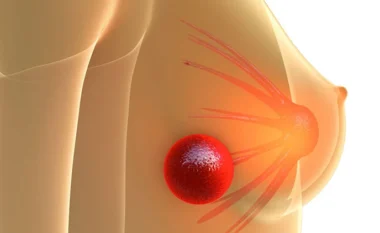Bladder Cancer : Causes , Symptoms , Diagnosis , Signs and Treatment Options
Bladder cancer is a prevalent form of cancer that begins in the cells lining the bladder, the organ responsible for storing urine. It occurs when abnormal cells in the bladder multiply and form a tumor.
Bladder cancer can be a serious condition, but early detection and appropriate treatment can significantly improve patient outcomes. In this article, we will explore the intricacies of bladder cancer, including its causes, risk factors, symptoms, methods of diagnosis, and various treatment options available to patients.

- Understanding Bladder Cancer: Bladder cancer typically originates in the urothelial cells, which line the inner surface of the bladder. However, other types of bladder cancer, such as squamous cell carcinoma and adenocarcinoma, can also occur but are less common. The disease can be categorized into non-invasive (confined to the bladder lining) and invasive (spreading into deeper layers of the bladder or surrounding tissues) types, each with different characteristics and treatment approaches.
- Causes and Risk Factors: The exact cause of bladder cancer is not fully understood, but several risk factors have been identified. These include cigarette smoking, exposure to certain chemicals and substances (such as arsenic, certain dyes, and certain medications), advanced age, male gender (men are more susceptible than women), a family history of bladder cancer, chronic bladder inflammation or infections, and certain inherited gene mutations.
- Symptoms and Diagnosis: Common symptoms of bladder cancer may include blood in the urine (hematuria), frequent urination, pain or burning during urination, urgency to urinate, and lower back pain. However, these symptoms can also be caused by other conditions, so proper diagnosis is crucial. Diagnostic procedures for bladder cancer may involve urine tests, imaging tests (such as CT scans or ultrasounds), cystoscopy (a procedure to examine the bladder), and biopsies to confirm the presence of cancerous cells.
- Treatment Options: The treatment of bladder cancer depends on several factors, including the stage and grade of the cancer, the overall health of the patient, and individual preferences. The primary treatment modalities for bladder cancer include:
a) Surgery: Surgical interventions are commonly employed to treat bladder cancer. Transurethral resection of the bladder tumor (TURBT) is used for early-stage or non-invasive tumors. For more advanced cases, partial or radical cystectomy (removal of a portion or the entire bladder) may be necessary.
b) Radiation Therapy: High-energy radiation is used to kill cancer cells or prevent their growth. It may be employed as the primary treatment for patients who are unable to undergo surgery or in combination with surgery to increase effectiveness.
c) Chemotherapy: Medications are used to destroy cancer cells throughout the body. Chemotherapy may be administered intravesically (directly into the bladder) or systemically (throughout the body). It can be used before or after surgery, or as the primary treatment for advanced bladder cancer.
d) Immunotherapy: Immunotherapy drugs stimulate the body’s immune system to recognize and attack cancer cells. Immune checkpoint inhibitors, such as pembrolizumab and atezolizumab, have shown promising results in treating advanced bladder cancer.
e) Targeted Therapy: Targeted therapies focus on specific molecular characteristics of cancer cells. They interfere with the growth and spread of cancer cells while minimizing damage to healthy cells.
- Lifestyle Modifications and Supportive Care: Adopting a healthy lifestyle, including quitting smoking, maintaining a balanced diet, staying physically active, and managing overall well-being, can play a supportive role in bladder cancer treatment. Additionally, supportive care measures such as pain management, psychological support, and regular follow-up care are essential for addressing the holistic needs of patients.
Conclusion: Bladder cancer is a complex disease, but advancements in diagnosis and treatment have improved patient outcomes. Early detection, understanding the risk factors, and exploring various treatment options can contribute to successful management of bladder cancer. It is crucial for individuals to seek medical attention if they experience any symptoms or have concerns about their urinary health. /albeu















